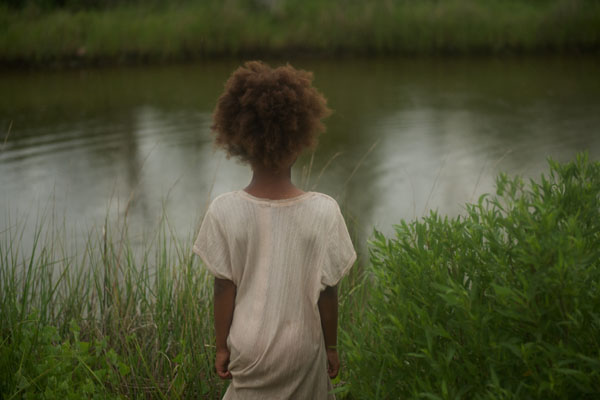You know how it is: you wake up in your knock-down corrugated shack, surrounded by chickens and dogs and pigs, before staggering out into the morning sun to press the animals against your ear, listening to their heartbeats. No, sorry, I’m getting ahead of myself. You probably don’t know how it is, and neither did I before watching Benh Zeitlin’s Beasts of the Southern Wild. But this is what this film does to its viewer right from the off. It depicts a world so vivid and immediate that two dimensions naturally become three, without the need for any fancy Hollywood stereoscopics.
It is, actually, our six-year-old heroine Hushpuppy (Quvenzhané Wallis) who tunes into the ba-dum, ba-dum of the animals’ hearts. We just follow her, beat by beat, through a camera lens that’s up-close and shaky. It’s almost as if we’re in the same mud that she’s trudging through, that the pigs are snuffling in, that the chickens are skittering across — and that’s surely the point. As another character soon says, ‘Meat, meat, meat, every animal is made of meat.’ We’re all in the same mud, scrabbling around to eat and avoid being eaten. This is, as Elton John didn’t quite put it, a regular Circle of Strife.
And there really is a lot of strife in this world. Beasts of the Southern Wild is set in the indeterminate future, when rising sea levels threaten to consume entire swathes of the southern United States. Hushpuppy herself lives in a broken-down community, somewhere around Louisiana, on the wrong side of the levees protecting the mainland from the coming flood. It’s the kind of place where most things are made of rusty oil drums, and where it’s easier to find gut-rot whiskey than clean water. And, to top it all off, there’s a storm a-brewing.
Whoa, hold on, is this just some dreary polemic about global warming and oil and Bush and all that? It may look like it on paper, but it doesn’t turn out that way on screen. In everything, from its characters to its cinematography, Beasts of the Southern Wild is too colourful to be counted as dreary. And it’s not nearly angry enough to be a polemic. Apart from one clumsy moment — an ice-sheet collapses as we’re told in voiceover that ‘the whole universe depends on everything fitting together just right’ — this film conveys its ideas gently and unobtrusively.
In fact, did you see Terence Malick’s Tree of Life last year? Beasts of the Southern Wild doesn’t quite have the poise of that film, but it stills plays like a smaller, Cajun version of it. It spans the tiniest things in nature to the largest, but makes sure to ground its (largely plotless) story in the everyday lives of its characters. At this film’s centre is Hushpuppy’s growing realisation that her father (Dwight Henry) is dying. It’s a stream that you can let wash over you. Or, if you’re in a particularly poignant mood, it can build into a tide to carry you away. I went for the second option.
After that, it’s the usual checklist: sensitive writing and direction, a brilliant score, and so on. But special praise must be lavished on the acting in Beasts of the Southern Wild. The two lead actors, who play father and daughter, weren’t actors at all before this film was made. Both were discovered in casting sessions in New Orleans itself, where dealing with strife is no act. And both deliver performances equal to most of those in Malick’s film, not least because they seem less self-conscious.
So it’s a shame that Beasts of the Southern Wild sometimes cuts away from these performances to alight on a strange allegorical substory about furry prehistoric beasties breaking free from the Arctic ice and trampling their way to Hushpuppy and the water’s edge. I’m normally all for films being treated as a collage of different, weird elements. But this feels like a rather affected way to scrape another layer of awe on to a film that is layered enough without it. Simpler would have been better.
But, as the ancient proverb goes, don’t worry unduly about the rampaging monster-boars. If you’re looking for a beautifully sculpted Shrub of Life to go alongside last year’s Tree of Life, then here is your film. Or perhaps you might try Madagascar 3: Europe’s Most Wanted, also opening this week, which no doubt has its own points to make about the ecosystem and our place within it. Your call.






Comments